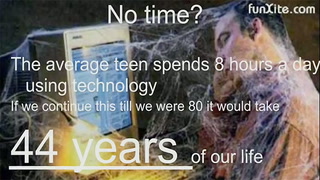Series Persuasive Speeches: Persuasive Speeches: Planning a Lesson Series
ELA.SL.8.3
| Common core State Standards
- ELA: English Language Arts
- SL: Speaking and Listening Standards 6-\x80\x9312
- 8: 8th Grade
-
3:
Delineate a speaker's argument and specific
claims, evaluating the soundness of the reasoning
and relevance and sufficiency of the evidence and
identifying when irrelevant evidence is introduced.
ELA.SL.8.4
| Common core State Standards
- ELA: English Language Arts
- SL: Speaking and Listening Standards 6-\x80\x9312
- 8: 8th Grade
-
4:
Present claims and findings, emphasizing salient
points in a focused, coherent manner with relevant
evidence, sound valid reasoning, and well-chosen
details; use appropriate eye contact, adequate
volume, and clear pronunciation.
ELA.SL.8.5
Common core State Standards
- ELA: English Language Arts
- SL: Speaking and Listening Standards 6â\x80\x9312
- 8: 8th Grade
-
5:
Integrate multimedia and visual displays into
presentations to clarify information, strengthen
claims and evidence, and add interest.
Save to My Resources
PLEASE CREATE A NEW ACCOUNT OR LOG IN TO ACCESS THIS CONTENT
Enjoy your first video for free. Subscribe for unlimited access.
Have questions about subscribing?
Click Here to learn more about individual subscriptions.
Click Here to learn more about School and Institution access.
Discussion and Supporting Materials
Thought starters
- How does Ms. Manley use the Common Core State Standards when designing her lessons?
- Notice the many different contexts in which students practice speaking and listening. How do the different parts of this lesson series build off of one another?
School Details
Chinook Middle School2001 98th Ave NE
Bellevue WA 98004
Population: 945
Data Provided By:

Teachers
Julie Manley
Newest
|
4 MIN
|
5 MIN
|
5 MIN
UNCUT CLASSROOMS
| TCHERS' VOICE
English Language Arts












11 Comments
Shama Sankaran Oct 9, 2020 2:04am
Thank you for this video. I will certainly do this with my year 7 students.
elizabeth proby Jun 14, 2018 6:22pm
Laura Falk Apr 18, 2018 10:27pm
zahida nazir Jun 16, 2017 2:25pm
E W Mar 10, 2014 6:01pm